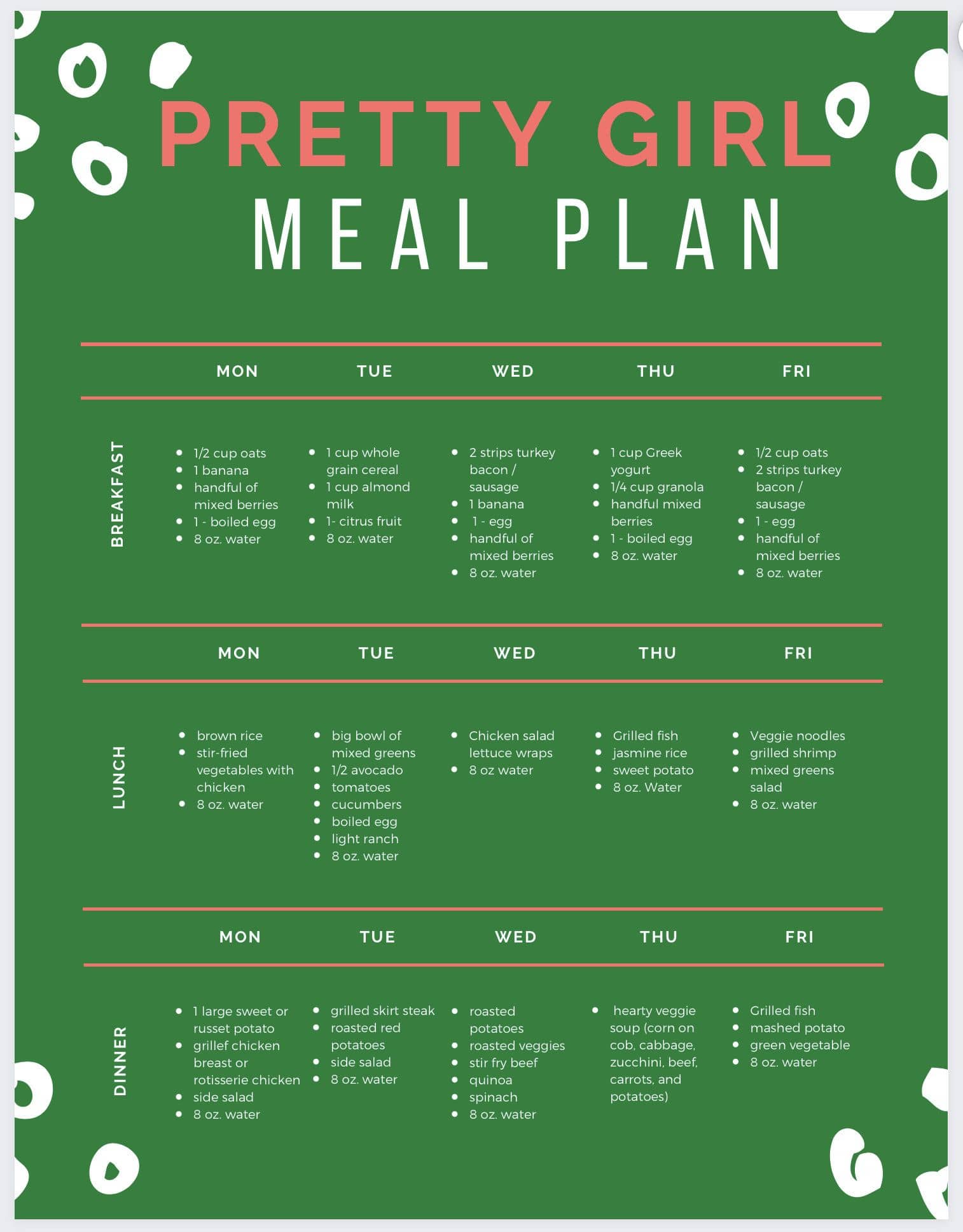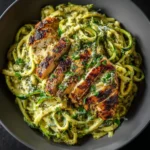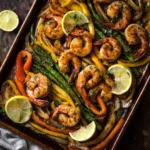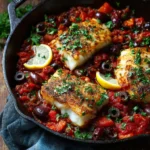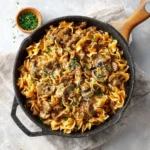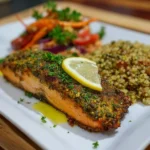Table of Contents
- Introduction: Why a Balanced Meal Plan Matters
- What Is the Pretty Girl Meal Plan?
- Key Benefits of Following a Structured Meal Plan
- Daily Breakdown
- Healthy Eating Tips & Best Practices
- Portion Control and Hydration
- Adapting the Plan to Your Lifestyle
- Exercise and Meal Planning
- Frequently Asked Questions (FAQ)
- Conclusion
1. Introduction: Why a Balanced Meal Plan Matters
Healthy eating is more than a short-term trend—it’s an investment in your long-term well-being. A balanced meal plan can help regulate your metabolism, support weight management, and improve overall energy levels. When you commit to a structured, nutrient-rich routine, you are giving your body the fuel it needs to function at its best.
In today’s fast-paced world, it’s easy to turn to quick fixes or heavily processed foods that might offer convenience but lack essential nutrients. With the Pretty Girl Meal Plan, however, you can enjoy quick yet well-balanced meals. This plan focuses on a variety of food groups, making sure your body receives proteins, healthy fats, carbohydrates, vitamins, and minerals throughout the day.
Moreover, following a clear, day-to-day outline reduces the stress associated with figuring out what to eat. You’ll find that you’ll save time, money, and energy with strategic grocery shopping lists and meal preps. Let’s dive deeper into what this plan entails!
2. What Is the Pretty Girl Meal Plan?
The Pretty Girl Meal Plan is a weekly schedule designed to provide a balanced mix of nutrients, flavors, and appealing dishes. Contrary to what the name might imply, this plan isn’t only about looking good—it’s about feeling good. By focusing on whole grains, lean proteins, fruits, vegetables, and essential fats, it aims to give you the energy and nutritional support you need to shine inside and out.
Key Features of the Pretty Girl Meal Plan
- Whole Grains: Oats, rice, quinoa, and whole-grain cereal for steady energy release.
- Lean Proteins: Chicken, turkey bacon/sausage, fish, shrimp, eggs, and occasional beef to maintain muscle and support metabolic functions.
- Fresh Produce: A variety of vegetables and fruits to supply essential vitamins, minerals, and fiber.
- Hydration: Each meal is accompanied by an 8-ounce glass of water, emphasizing the importance of staying well-hydrated.
Whether your goal is weight management, improved energy levels, or a structured eating routine, the Pretty Girl Meal Plan provides a day-to-day roadmap for success.
3. Key Benefits of Following a Structured Meal Plan
- Improved Nutrient Intake: By rotating different food groups and ingredients, you’re ensuring a broader spectrum of nutrients.
- Portion Control: Each meal in this plan has recommended serving sizes, helping to prevent overeating.
- Sustainable Energy Levels: Whole grains and protein help keep you satiated and energized throughout your day.
- Variety in Meals: You won’t feel restricted because the menu changes daily, with different proteins, veggies, and flavors.
- Time & Budget Friendly: When you know exactly what to buy and cook, you minimize waste and random takeout spending.
By sticking to a consistent plan, you can also detect which foods work best for your body, making it easier to customize your nutrition.
4. Daily Breakdown
Below is a detailed breakdown of each day—breakfast, lunch, and dinner—along with your must-have beverage: an 8-ounce glass of water at every meal.
Monday
Breakfast
- ½ cup oats
- 1 banana
- Handful of mixed berries
- 1 boiled egg
- 8 oz. water
Why This Works: Oats are a great source of soluble fiber, keeping you feeling full for longer. A banana and mixed berries offer natural sweetness and antioxidants. The boiled egg provides high-quality protein to start your day on a strong note.
Lunch
- Brown rice
- Stir-fried vegetables with chicken
- 8 oz. water
Nutritional Benefits: Brown rice contributes healthy complex carbohydrates, while chicken is a lean protein option. Stir-frying vegetables (like bell peppers, onions, broccoli, or zucchini) in minimal oil keeps it light and nutrient-dense.
Dinner
- 1 large sweet or russet potato
- Grilled chicken breast or rotisserie chicken
- Side salad
- 8 oz. water
Dinner Delight: A sweet potato offers fiber and essential vitamins (like Vitamin A), while grilled or rotisserie chicken is another lean protein to keep you satisfied. A side salad loaded with leafy greens, tomatoes, cucumbers, and a light dressing rounds out the meal with extra nutrients.
Tuesday
Breakfast
- 1 cup whole grain cereal
- 1 cup almond milk
- 1 citrus fruit (e.g., orange or grapefruit)
- 8 oz. water
Why This Works: Whole grain cereals are quick, convenient, and less processed than sugary alternatives. Almond milk contains fewer calories than whole dairy milk, making it an excellent choice for those watching their calorie intake. The citrus fruit supplies vitamin C.
Lunch
- Big bowl of mixed greens
- ½ avocado
- Tomatoes
- Cucumbers
- Boiled egg
- Light ranch dressing
- 8 oz. water
Nutritional Benefits: This salad is loaded with vitamins and minerals. Avocado gives you healthy fats, while a boiled egg ups your protein intake. Using light ranch dressing allows you to keep flavor without too many additional calories.
Dinner
- Grilled skirt steak
- Roasted red potatoes
- Side salad
- 8 oz. water
Dinner Delight: Lean cuts of beef like skirt steak provide iron and protein. Roasted red potatoes are a lighter carb option compared to frying them, and a side salad ensures more veggies to complete the meal.
Wednesday
Breakfast
- 2 strips turkey bacon/sausage
- 1 banana
- 1 egg
- Handful of mixed berries
- 8 oz. water
Why This Works: Turkey-based breakfast meats have less saturated fat compared to pork. The combination of fruit and protein ensures a balanced start, giving you energy without a mid-morning slump.
Lunch
- Chicken salad lettuce wraps
- 8 oz. water
Nutritional Benefits: Opt for chicken breast mixed with diced veggies, a touch of mayo or Greek yogurt, or seasoning in place of heavy sauces. Wrapping it all in lettuce instead of bread reduces carbs and adds crunch and hydration from the lettuce.
Dinner
- Roasted potatoes
- Roasted veggies
- Stir-fry beef
- Quinoa
- Spinach
- 8 oz. water
Dinner Delight: Roasting potatoes and veggies is a healthy cooking method that preserves nutrients. Lean stir-fry beef provides protein and iron, while quinoa is an excellent source of protein and fiber. Spinach is rich in vitamins A, C, and K.
Thursday
Breakfast
- 1 cup Greek yogurt
- ¼ cup granola
- Handful of mixed berries
- 1 boiled egg
- 8 oz. water
Why This Works: Greek yogurt is high in protein. Granola adds a satisfying crunch, while berries contribute vitamins and antioxidants. The boiled egg supplies additional protein to keep you feeling full.
Lunch
- Grilled fish
- Jasmine rice
- Sweet potato
- 8 oz. water
Nutritional Benefits: Fish like salmon or tilapia bring healthy fats (omega-3s) and essential nutrients. Jasmine rice is a flavorful carbohydrate source, and sweet potato is rich in beta-carotene and fiber.
Dinner
- Hearty veggie soup (corn on the cob, cabbage, zucchini, beef, carrots, potatoes)
- 8 oz. water
Dinner Delight: A hearty soup made with beef and a variety of veggies can be both filling and nutritious. Using minimal added salt and opting for a tomato-based or broth-based soup helps manage sodium intake. Vegetables and lean beef combine for a well-rounded nutritional profile.
Friday
Breakfast
- ½ cup oats
- 2 strips turkey bacon or sausage
- 1 egg
- Handful of mixed berries
- 8 oz. water
Why This Works: Ending the work week with a power breakfast sets the tone for the weekend. Oats stabilize blood sugar, while turkey bacon/sausage and egg offer a protein punch.
Lunch
- Veggie noodles
- Grilled shrimp
- Mixed greens salad
- 8 oz. water
Nutritional Benefits: Veggie noodles (such as zucchini noodles or whole-grain pasta with vegetable components) add more fiber and vitamins. Shrimp is a lean protein with low calories and high nutrient density. A mixed greens salad is the perfect complement for more vitamins and minerals.
Dinner
- Grilled fish
- Mashed potato
- Green vegetable (e.g., broccoli, green beans, or spinach)
- 8 oz. water
Dinner Delight: Fish is packed with good fats and protein, while mashed potatoes, if prepared with low-fat milk or just a bit of butter, remain a comforting choice. Round out the evening with a green vegetable for a vitamin boost.
5. Healthy Eating Tips & Best Practices
- Meal Prep on Weekends: Use Sundays to chop veggies, marinate proteins, and pre-portion meals. This helps you stick to the plan during a busy week.
- Cook with Minimal Oil: Use olive oil or avocado oil sparingly when stir-frying or grilling. Consider non-stick pans or baking sheets to reduce oil usage.
- Spice it Up: Season meals with herbs and spices (garlic, basil, rosemary, paprika, etc.) to enhance flavors naturally without adding excessive salt or sauces.
- Include Variety: Swap out proteins, fruits, or veggies if you have dietary restrictions or preferences. Try different cooking methods like steaming, roasting, or sautéing.
- Listen to Your Body: If you notice certain foods make you feel sluggish or bloated, consider substitutions. Everyone’s body reacts differently to various ingredients.
6. Portion Control and Hydration
Portion control is crucial in any balanced diet. Even healthy foods can contribute to weight gain if consumed in large quantities. Pay attention to serving sizes like:
- ½ cup oats
- 1 cup cereals
- 3-4 oz. lean protein per serving (about the size of your palm)
Additionally, hydration is often overlooked. Water aids digestion, nutrient transport, and overall bodily functions. Each meal in this plan is coupled with an 8-ounce glass of water, but feel free to drink more throughout the day based on your thirst level and activity.
7. Adapting the Plan to Your Lifestyle
- Vegetarian/Vegan: Replace animal proteins with tofu, tempeh, lentils, chickpeas, or other plant-based alternatives.
- Gluten-Free: Opt for gluten-free cereals, breads, and pasta where the plan calls for grains.
- Low-Carb/Keto: Decrease or eliminate the starchy carbs (potatoes, rice) and bump up non-starchy veggies (broccoli, spinach, kale).
- Food Allergies: Always read labels carefully and substitute any ingredients that may trigger an allergic reaction.
If you have significant medical conditions or specific nutritional needs, consult a certified nutritionist or healthcare provider before making major changes to your diet.
8. Exercise and Meal Planning
While a healthy meal plan lays the foundation for a wholesome lifestyle, pairing it with regular exercise amplifies your results. You can try:
- Cardio Workouts (e.g., jogging, cycling, or brisk walking)
- Strength Training (e.g., weightlifting or bodyweight exercises)
- Flexibility & Mindfulness (e.g., yoga or Pilates)
Combining structured meals with daily physical activity helps regulate metabolism, improve muscle tone, and support mental health. Always remember to listen to your body and rest when necessary.
9. Frequently Asked Questions (FAQ)
Q1: Can I follow this plan for more than one week?
A: Absolutely! You can repeat this plan or mix and match the meals across multiple weeks. Just ensure you keep variety in mind for balanced nutrition.
Q2: Is it okay to snack between meals?
A: Yes, especially if you’re physically active or feel hungry. Opt for healthy snacks like Greek yogurt, nuts, fruit, or cut-up vegetables.
Q3: Can I add sauces or dressings?
A: Yes, but be mindful of sugar and fat content. Go for low-fat, low-sugar, or homemade sauces to manage overall calorie intake.
Q4: Do I need supplements while on this plan?
A: Supplements depend on individual needs. Consult with a healthcare professional for personalized recommendations, especially if you suspect any nutrient deficiencies.
Q5: What if I don’t like some of the ingredients listed?
A: Feel free to substitute! The main idea is to maintain the balance of proteins, carbs, and fats. For instance, swap chicken for turkey or fish, or replace oats with whole-grain toast.
10. Conclusion
The Pretty Girl Meal Plan is more than a diet—it’s a holistic approach to eating well and feeling your best. By focusing on nutrient-dense foods, portion control, and consistent hydration, you’re setting yourself up for sustainable success. Each day’s breakfast, lunch, and dinner options offer variety, ease, and nourishment. Whether you’re new to structured meal planning or looking to refine your current routine, this plan serves as a versatile template.
Remember, no meal plan is one-size-fits-all. Adjust recipes and portion sizes according to your health goals, dietary restrictions, and personal preferences. Always keep an open line of communication with your healthcare provider, especially if you have specific nutritional needs or health concerns.
Incorporate regular exercise, adequate sleep, and stress management to complement your healthy eating habits. By embracing a balanced lifestyle, you’ll not only look great but also feel more energetic and confident each day. Start your journey now, and enjoy the transformative benefits of the Pretty Girl Meal Plan!
Disclaimer: This article is for informational purposes only. Always consult a healthcare professional or certified nutritionist before making significant dietary changes.
Liked this comprehensive guide? Share it with friends who want a structured, tasty, and nutrient-rich weekly meal plan. Don’t forget to subscribe to our newsletter for more healthy eating tips, recipes, and well-balanced meal ideas!
